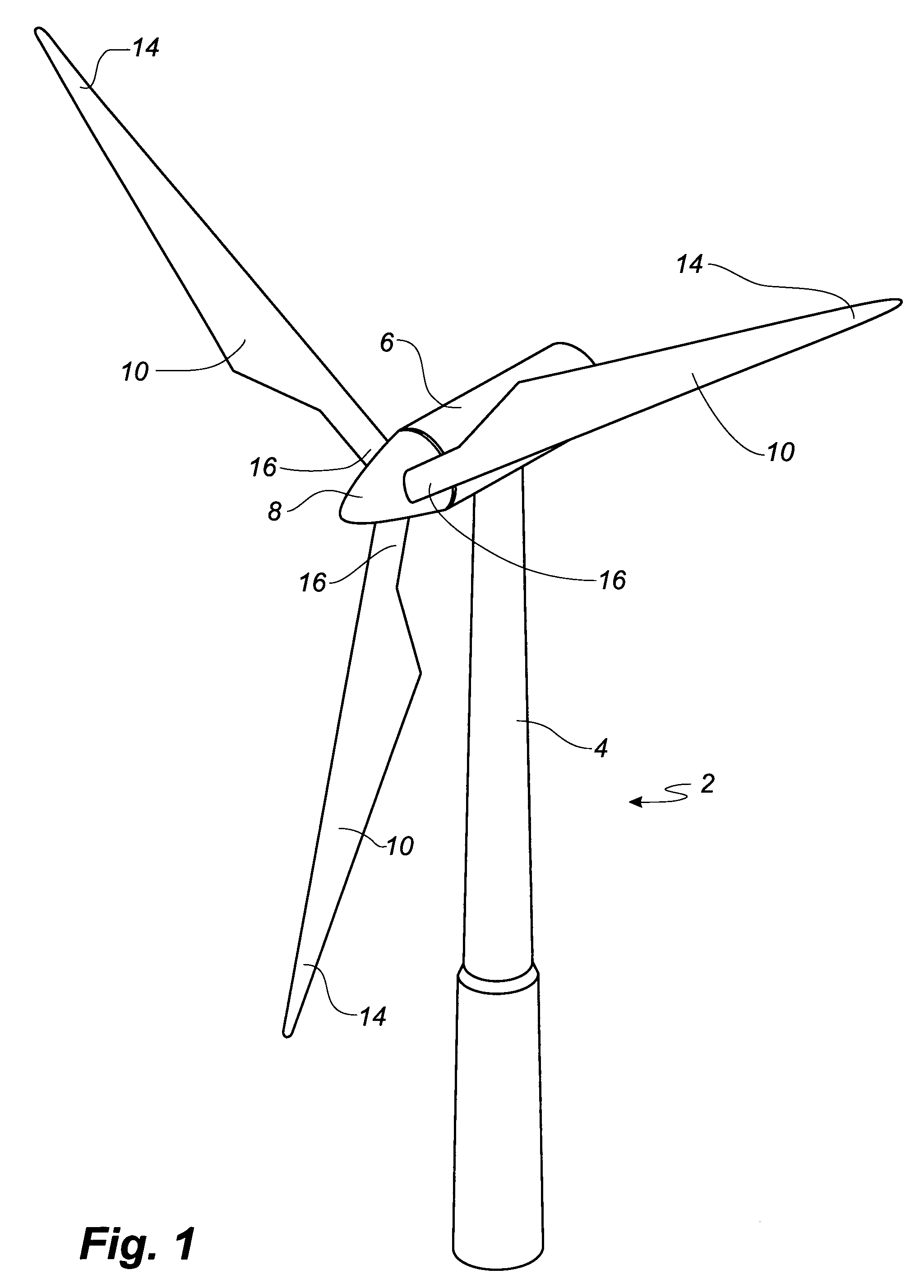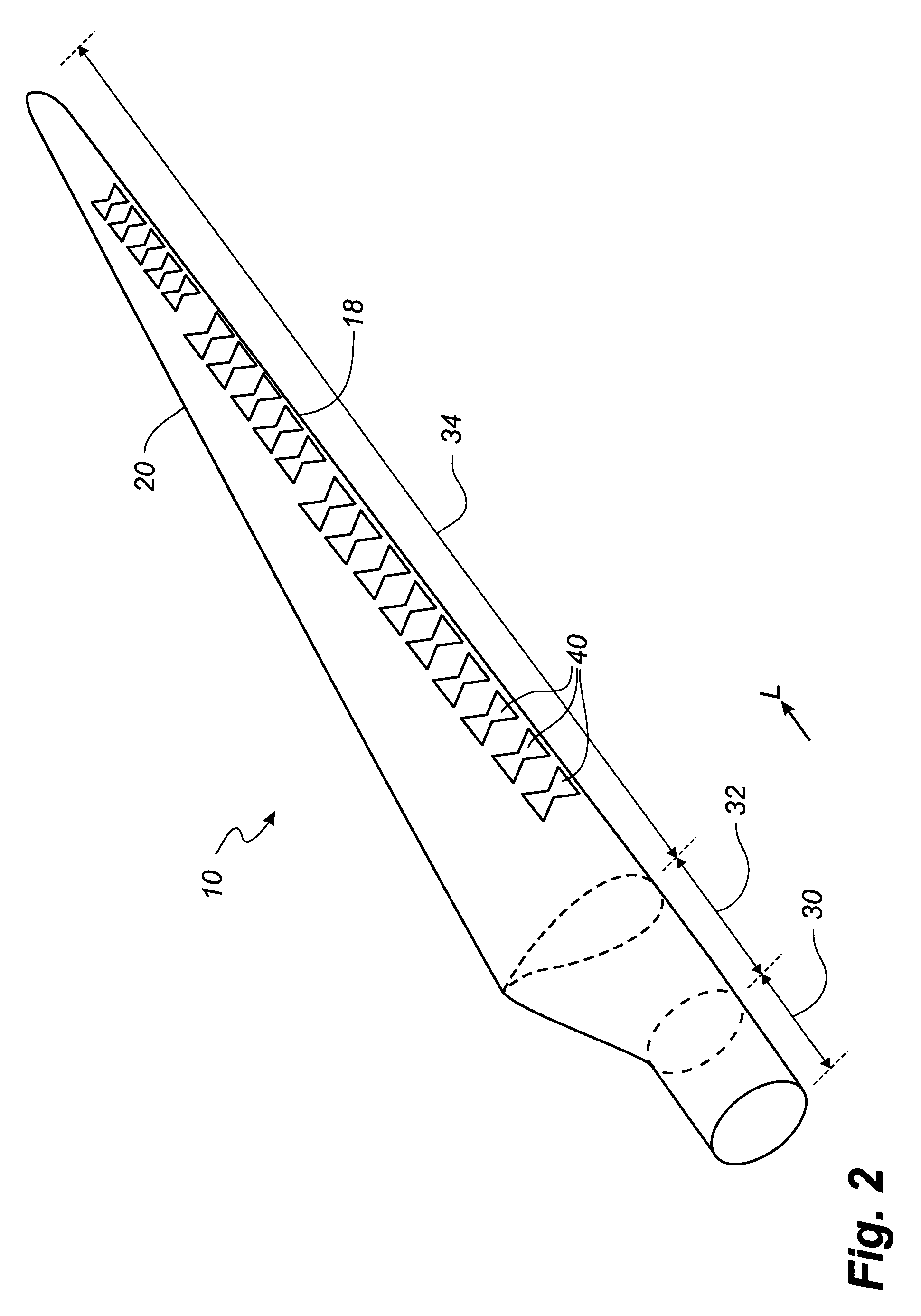Wind turbine blade with submerged boundary layer control means
- Summary
- Abstract
- Description
- Claims
- Application Information
AI Technical Summary
Benefits of technology
Problems solved by technology
Method used
Image
Examples
first embodiment
[0049]FIG. 3 shows a schematic view of a boundary layer control means 100 for maintaining flow of a flowing medium attached to the exterior of a flow control member, such as a wind turbine blade, having a flow control surface 112. The boundary layer control means 100 comprises a channel, which is submerged in the flow control surface 112. The channel extends in the direction of a free flow having a flow direction, which is depicted with arrows in the figure. The channel comprises a first end 102 facing the free flow and a second end 104 positioned downstream in the flow of the flowing medium from the first end 102.
[0050]The channel comprises a bottom surface 106 extending from the first end 102 to the second end 104. The channel further comprises a first sidewall 108 extending between the flow control surface 112 and the bottom surface 106, as well as a second sidewall 110 extending between the flow control surface 112 and the bottom surface 106. The first sidewall 108 forms a first...
fourth embodiment
[0058]FIG. 8 shows a boundary layer control means for maintaining a flow attached to the exterior of a flow control member and is a variation of the embodiment shown in FIG. 3. The boundary layer control means comprises a channel submerged in a flow control surface 412 and has a first end 402 and a second end 404.
[0059]The sides of the channel are defined by a first sidewall 408 and a second sidewall 410, which have a first height and a second height, respectively. The first sidewall 408 and the second sidewall 410 have a maximum height between the first flow accelerating zone and the second channel zone. The first height and the second height are decreasing from this position of maximum height towards the first end 402 and the second end 404, so that the channel emerges at the flow control surface 412 at the first end 402 and the second end 404.
[0060]FIG. 9 shows a fifth embodiment of a boundary layer control means, wherein like numerals refer to like parts of the fourth embodiment...
PUM
 Login to View More
Login to View More Abstract
Description
Claims
Application Information
 Login to View More
Login to View More - R&D
- Intellectual Property
- Life Sciences
- Materials
- Tech Scout
- Unparalleled Data Quality
- Higher Quality Content
- 60% Fewer Hallucinations
Browse by: Latest US Patents, China's latest patents, Technical Efficacy Thesaurus, Application Domain, Technology Topic, Popular Technical Reports.
© 2025 PatSnap. All rights reserved.Legal|Privacy policy|Modern Slavery Act Transparency Statement|Sitemap|About US| Contact US: help@patsnap.com



